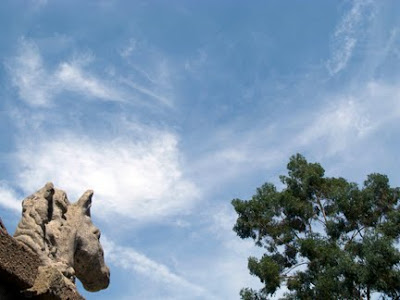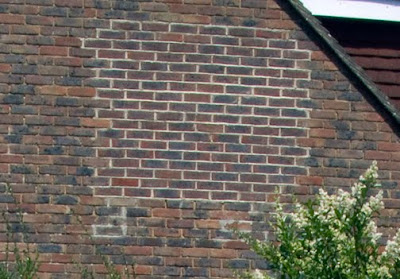And why not trace? Look at the cross between Hank Marvin (of the Shadows) and Michael Caine (in the Ipcress File) - a shadowy spy? Hank and his girlfriend survived almost intact, they must have been traced. But notice she’s changed her top, and he’s borrowed the yellow jacket from the headless man obscured behind the smoking woman, on the left in Honky Tonk Party 1.
Let’s stay with profile of the smoking woman behind the pianist’s head, because it too has been traced, duplicated, and transferred to the plates on the wall in Honky Tonk 3.
And finally, take another look at Hanky Caine’s girl. The shirt she’s wearing in Honky 1 has been used for the pub carpet on the cover of Honky 3. And if you care to count the dots on the shirt and dots on the carpet– spot the spots on both - you’ll find a numerical parity there too. The floor is 146 dots dirty and the shirt’s 142 spots spotty. But if you add the 4 spots on the shirt – on her right elbow reflected in the bar (next to the pint glasses), the amount of spots on the shirt equals the amount of spots of dirt on the carpet.









































